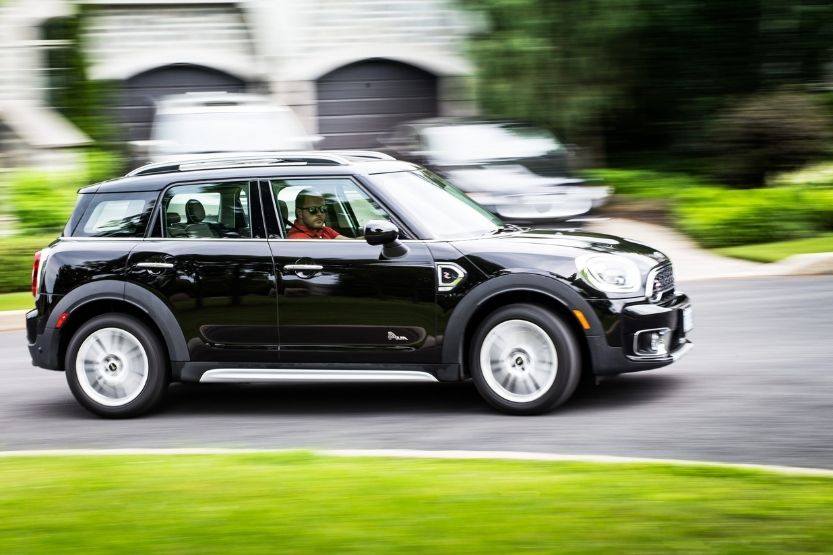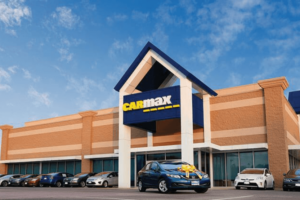The Mini Cooper has always been known for its impressive appearance and incomparable driving dynamics. It definitely is a vehicle that’s easy and fun to drive. But what can we say in terms of the Mini Cooper reliability?
J.D. Power recognized the Mini Cooper as the most dependable compact car in 2019. It even recognized the Mini brand as one of the Top 4 brands for overall dependability. In 2015, J.D. Power only ranked it 28th out of 32 vehicles in terms of reliability. This means that the quality of the Mini Cooper has remarkably improved.
Read on to learn more about the features of the Mini Cooper that make it a reliable car. Are all Mini Cooper models reliable? Or are there some variants that are not? Let’s find out.
Mini Cooper Reliability

J.D. Power recognized the Mini Cooper as the most dependable compact car in 2019. The Mini brand was even included as one of the Top 4 brands for overall dependability. In 2015, J.D. Power only ranked it 28th out of 32 vehicles in terms of reliability. This only means that the Mini Cooper has undergone major enhancements over the years.
J.D. Power
J.D. Power has a good track record as a data analytics and consumer intelligence company in the United States. Suffice to say that its recognition of the Mini Cooper is a credible one.
Consumer Reports
Aside from J.D. Power, Consumer Reports has many good things to say about the Mini Cooper. Consumer Reports, on the other hand, is a nonprofit consumer organization in the United States. They focus on independent product testing.
Consumer Reports conducted extensive testing and research to determine the quality of the Mini Cooper. They performed a thorough investigation of all its parts, including its engine, driving system, and suspension.
The Mini Cooper years to avoid are probably those manufactured between 2006 and 2012. Consumer Reports gave the Mini brand the lowest possible reliability scores during this period. Its trouble spots included its engine and electric system.
However, Consumer Reports also states that over the years, the Mini Cooper has notably improved. It was fully redesigned in 2014. BMW, its maker, has remarkably addressed most, if not all, of its problematic areas. So, if you’re wondering about the best year for Mini Cooper reliability, it is between 2015 and 2019.
You’re probably curious about the specs and features of Mini Cooper models. So let’s take a look at them, starting from the first generation and down to the third generation of Mini Coopers. Let’s learn more about their power, design, reliability, and recalls.
First Generation Mini Cooper & Cooper S: 2002 to 2006
The first generation of Mini Cooper and Cooper S was a hit when it launched in 2002. Four years before it was launched, the Volkswagen New Beetle was introduced to the public. The Beetle was impressive in terms of styling. However, it under-delivered in terms of driving experience. The Mini Cooper answered this.
First Generation Mini Cooper and Cooper S Features
The Mini Cooper did not only look fantastic. It also delivered the kind of driving experience that its rivals lacked. Both the base model Cooper and the Cooper S R53 provided drivers with near-telepathic steering. It featured fast throttle response, excellent visibility, and a comfortable seating position. It was easy to drive, not to mention convenient to drive.
Issues with the First Generation Mini Cooper
The first generation Mini Cooper and Cooper S had their own flaws too:
1. High Failure Rate of the CVT Automatic
There was a high failure rate involving the CVT automatic in the base units. It resulted in a class-action lawsuit, forcing the Mini brand to raise the transmission warranty to 150,000 miles.
A failed transmission most likely meant total replacement. This meant that the cost could exceed the total value of the unit.
2. Power Steering
There were several issues with the Cooper S too. One of which involved its power steering, which mainly relied on an electric pump. It did not use the traditional belt-drive unit, so its power steering had a habit of failing.
3. Cooling System
The cooling system of the Cooper S seemed problematic too. There were water pump and thermostat housing issues.
However, these issues have already been addressed. The replacement parts are known to have been more durable.
In 2005, convertible Cooper and Cooper S were introduced. The top mechanism was proven to be durable. However, there were Cooper drivers who said that it was complicated to operate. Also, some units had leaks. So, if you are considering getting a first-generation Mini, you better test how functional its open-top motoring is.
Second Generation Mini Cooper & Cooper S: 2007 to 2014

Those who have tried driving Mini Coopers of different generations will most likely say that the second generation was the most problematic of all. But to be fair to the Mini brand, there were no major issues anyway. If there were, they could efficiently address them.
It’s just that Mini Cooper enthusiasts expected the second generation to be much better than the first one. The first generation gained success for its simplicity and the impressive driving experience it provided its users.
Features of Second Generation Mini Cooper and Cooper S
1. Appearance and Weight
The second generation was noticeably bigger and heavier. However, it also notably brought refinement and added comfort.
2. Length
With the 2007 model, it became slightly longer, measuring 146.2 inches. As for the width and height, they were relatively the same. The wheelbase remained the same as well, at 97.1 inches.
When you place the first generation unit beside the second generation unit, the latter is noticeably bulkier.
3. Driving Experience
You’ll also feel the difference when you sit behind the wheel. Somehow, its sharpness has been dulled, and it feels heavy driving it. However, it still turns in quickly and rotates conveniently. Overall, the driving experience is still better than other small vehicles.
4. Engine
The significant difference of the second generation Minis involves the engine. From a supercharged engine, the second-gen Cooper S features a turbocharged engine. Evidently, horsepower has increased to 172 hp, and it delivers 177 lb-ft of torque at 1600 RPM. Suffice to say that it was more ideal for American driving.
There have been improvements in the engine features of the base Cooper. It delivers 118 hp and 114 lb-ft of torque. In terms of fuel economy, both the second-gen Mini Cooper and the Cooper S are better than the first-gen units.
Second Generation Mini Cooper Issues
Timing Chains and Tensioners
The weak points of the second generation Minis involved timing chains and tensioners, which were initially included as lifetime parts. But there were catastrophic failures that occurred and resulted in a class-action lawsuit. This prompted Mini to extend the warranty to 100,000 miles from the original 50,000 miles.
What’s great about this is that this issue has already been addressed. Mini did not encounter any more complaints after that lawsuit.
Heavy Oil Consumption and Coolant Leaks
There were also other issues, such as heavy oil consumption and coolant leaks. Mini owners have to accept that their car really consumes oil heavily in terms of heavy oil consumption. As for its other issues, it can be addressed by strictly following its regular maintenance schedule.
Again, what does J.D. Power say about Mini Cooper’s reliability? In 2019, J.D. Power chose Mini Cooper as among the most dependable compact car. The Mini brand itself is included in the Top 4 most dependable brands. Then, in 2015, the Mini Cooper got the 28th spot out of 32 vehicles for reliability. Meaning the brand has improved greatly.
Third Generation Mini Cooper & Cooper S: 2014 to Present
The third generation of Mini Cooper is said to be the most mass market-friendly of all. Here are its features:
1. Interior
Both the Mini Cooper and the Cooper S hardtop comes in 3- and 5-door hatchback variants. When it comes to its interior, they look more normal than the previous models. The driving experience has improved a lot too. In fact, it can now be compared to a front-wheel-drive BMW.
2. Engine
The Cooper S features a turbocharged 2L I4 engine that delivers 189 hp and 207 lb-ft of torque at 1350 RPM. Meanwhile, the base Cooper features a turbocharged 1.5L I3 engine that delivers 134 hp and 162 lb-ft of torque at 1480 RPM.
3. EPA
You can configure both models with either a 6-speed manual transmission or a 7-speed dual-clutch automated manual transmission. Both require premium fuel. As for the base Cooper, it is EPA rated at 30 mpg. Whereas the Cooper S is EPA rated at 27 mpg.
The previous Mini Cooper models had issues with their crankshaft bearings and oil coolers. These have been addressed with the third-generation units. In case these issues arise in the third generation models, they should then be handled under warranty.
2021 Mini Cooper

The U.S. News conducted a review of the 2021 Mini Cooper, and they gave it a score of 79 out of 100 for its quality and reliability. It scored 9.5 out of 10 for safety, 6.2 out of 10 for interior, and 7.4 out of 10 for performance.
If you are looking for a subcompact car, then Mini Cooper is a great choice. Mini offers this car in several body styles:
- 2-door Mini Hardtop,
- 4-door Mini Hardtop, and
- Mini Convertible.
Their adept handling and punchy engines make them all fun and convenient to drive. The cabin is noticeably gorgeous and stylish. Also, their tech features are not at all complicated to use.
Its downside involves the cargo area and the rear seats as they are both on the small side. But then again, with its overall compact size, you can’t expect it to provide that much space.
Mini Hardtop Interior
Let’s talk about the interior features of the Mini Hardtop according to the following factors:
- Cargo Space
- Seating Capacity
- Child Car Seats
- Interior Quality
- Infotainment, Bluetooth, and Navigation
1. Cargo Space
The 2-door hardtop units feature 8.7 cu ft of cargo space behind the rear seats. It measures 34 cu ft when the rear seats are folded. At the same time, the 4-door hardtop units feature 13.1 cu ft of cargo space behind the rear seats. It measures 40.7 cu ft when the rear seats are folded.
As for the Mini Convertible, the cargo space is even smaller at 5.7 cu ft. When the rear seats are folded, space becomes 7.6 cu ft.
2. Seating Capacity
The two-door Mini Hardtop and the Mini Convertible have a seating capacity of 4. At the same time, the 4-door units have a seating capacity of 5.
In terms of comfort, the front seats are more comfortable and accommodating compared to the rear seats. Unfortunately, the two-door models have cramped rear seats. The 4-door units are, however, more accommodating for adults.
3. Child Car Seats
What’s good about the Mini Cooper is that all models have complete sets of latch connectors. There are, in fact, two sets for the rear outboard seats.
4. Interior Quality
The Mini Cooper has always been known for its stylish and unique cabin design. Mini Cooper units do not only look good on the outside, but they have excellent interiors as well. The interior looks impressive and is well built.
5. Infotainment, Bluetooth, and Navigation
When it comes to its standard infotainment system, it doesn’t have that many features. It also has a straightforward interface and conveniently reachable controls.
However, you have the option to upgrade the system with satellite radio and a touch screen. You can also add an Apple CarPlay smartphone connectivity.
Should I Buy the Mini Cooper?
If performance and style are on top of your priority list, then the Mini Cooper will be a good choice for you. But if tech features and interior space are on top of your priorities, the Mini Cooper might not be the perfect vehicle for you.
Conclusion – Mini Cooper Reliability
J.D. Power recognized the Mini Cooper as the most dependable compact car in 2019. The Mini brand was even included as one of the Top 4 brands for overall dependability. In 2015, J.D. Power only ranked it 28th out of 32 vehicles in terms of reliability. This only means that the Mini Cooper has undergone major enhancements over the years.
Mini Cooper models had issues, mostly from the second generation, but Mini has already addressed all these issues. So, it is safe to say that the Mini Cooper is a reliable car.
Related reading:
Most Reliable Cars of All Time [10 Top Cars]





![Ford Focus Reliability [How Reliable Are They?] Ford Focus Reliability](https://roadsumo.com/wp-content/uploads/2022/02/Ford-Focus-reliability-150x150.jpg)
![Ford Escape Reliability [How Reliable Is the Escape?] Ford Escape Reliability](https://roadsumo.com/wp-content/uploads/2022/02/Ford-Escape-reliability-150x150.jpg)
![Read more about the article Hybrid Motorcycle Defined [And the 8 Best Hybrid Motorcycles]](https://roadsumo.com/wp-content/uploads/2021/07/hybrid-motorcycle-300x200.jpg)

![Read more about the article How Long Do Subarus Last? [Outback, Impreza, Forester and More]](https://roadsumo.com/wp-content/uploads/2022/04/how-long-do-Subarus-last-300x200.jpg)